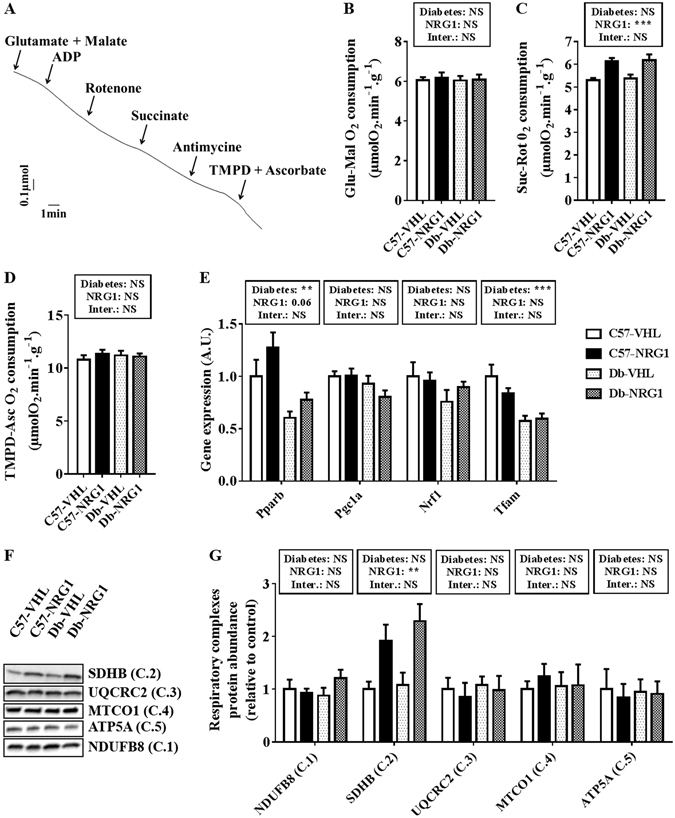Figure 1.

NRG1 treatment improves complex 2-mediated mitochondrial respiration in gastrocnemius muscle. C57BL/6JRJ (C57) and db/db (Db) male mice were treated with vehicle (VHL; 0.9% NaCl solution; n = 8/condition) or with NRG1 (50 μg . kg−1; n = 8/condition), three days per week for eight weeks. Representative recording (A) of ADP-stimulated maximal mitochondrial O2 consumption assessed in permeabilised gastrocnemius muscle fibres with glutamate and malate (Glu-Mal) (B), succinate and rotenone (Suc-Rot) (C) or TMPD and ascorbate (TMPD-Asc) (D) as substrates and inhibitors. The expression of genes involved in mitochondrial biogenesis (Pparb, Pgc1a, Nrf1 and Tfam) was assessed by RT-qPCR (E). The abundance of respiratory complex subunits was analysed by western blotting ((F) cropped images). Quantification of the abundance of respiratory complexes subunits (G) was relative to the level in untreated healthy mice (C57-VHL, white bars). Gene expression levels were calculated using the absolute quantification method and a cDNA calibration curve, and it is shown as relative change of the expression in untreated healthy mice (C57-VHL, white bars). Results are the mean ± SEM, (n = 8 per group). The diabetes (healthy vs db/db mice) and NRG1 (saline vs NRG1) effects were investigated with a 2 × 2 ANOVA. When a significant interaction was found, the Tuckey’s test was used for post-hoc multiple comparisons. **p < 0.01, ***p < 0.001, NS: not significant.
